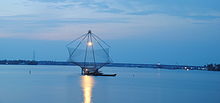Malabar District
The detached settlements of Tangasseri and Anchuthengu, which were British colonies within the kingdom of Travancore in southern Kerala, also formed part of Malabar District until 1927.[14] It was the erstwhile leaders of Congress Socialist Party, such as P. Krishna Pillai, K. Damodaran, E. M. S. Namboodiripad, who formed the CPI branch in Kerala.[24] Pliny the Elder (1st century CE) states that the port of Tyndis was located at the northwestern border of Keprobotos (Chera dynasty).[29][30] Three inscriptions those date back to 932 CE, those were found from Triprangode (near Tirunavaya), Kottakkal, and Chaliyar, mention the name of Goda Ravi of Chera dynasty.[31] Several inscriptions written in Old Malayalam those date back to the 10th century CE, have found from Sukapuram near Edappal, which was one of the 64 old Nambudiri villages of Kerala.In the 14th century, Kozhikode conquered larger parts of central Kerala after the seize of Tirunavaya region from Valluvanad, which were under the control of the king of Perumbadappu Swaroopam (Cochin).[3] During the 15th century Kalaripayattu was important in the history of Malabar, where some warriors lived, most notably puthooram veettil Aromal Chekavar and his sister Unniyarcha, chieftains of martial arts.[38] The Portuguese arrived at Kappad Kozhikode in 1498 during the Age of Discovery, thus opening a direct sea route from Europe to South Asia.The Zamorin of Calicut, who was originally the ruler of Eranad based at Nediyiruppu, developed the port at Kozhikode and changed his headquarters to there for maritime trade.Abdur Razzak (1442–43), Niccolò de' Conti (1445), Afanasy Nikitin (1468–74), Ludovico di Varthema (1503–1508), and Duarte Barbosa witnessed the city as one of the major trading centres in the Indian subcontinent where traders from different parts of the world could be seen.[3] Being home to the prominent figures like Thunchaththu Ezhuthachan, Poonthanam Nambudiri, Melpathur Narayana Bhattathiri, Kunchan Nambiar, and Zainuddin Makhdoom II, South Malabar was the cultural capital of medieval Kerala.In attempting to solve astronomical problems, the Kerala school independently created a number of important mathematics concepts, including series expansion for trigonometric functions.[53] It is said that Nannan, the most renowned ruler of Ezhimala dynasty, took refuge at Wayanad hills in the 5th century CE when he was lost to Cheras, just before his execution in a battle, according to the Sangam works.[53] Ezhimala kingdom was succeeded by Mushika dynasty in the early medieval period, most possibly due to the migration of Tuluva Brahmins from Tulu Nadu.The Kolathunadu in the late medieval period emerged into independent 10 principalities i.e., Kadathanadu (Vadakara), Randathara or Poyanad (Dharmadom), Kottayam (Thalassery), Nileshwaram, Iruvazhinadu (Panoor, Kurumbranad etc., under separate royal chieftains due to the outcome of internal dissensions.[2] The Nileshwaram dynasty on the northernmost part of Kolathiri dominion, were relatives to both Kolathunadu as well as the Zamorin of Calicut, in the early medieval period.[69] The Portuguese were ousted by the Dutch East India Company, who during the conflicts between the Kozhikode and the Kochi, gained control of the trade.[74] His son and successor, Tipu Sultan, launched campaigns against the expanding British East India Company, resulting in two of the four Anglo-Mysore Wars.[75][76] Tipu ultimately ceded the Malabar district and South Kanara to the company in the 1790s; both were initially annexed to the Bombay Presidency of British India.[80] Initially the British had to suffer local resistance against their rule under the leadership of Kerala Varma Pazhassi Raja, who had popular support in Thalassery-Wayanad region.[2] It consisted of the following 36 Amsoms: Randathara was also called Poyanadu due to the belief that it was the place from where the Cheraman Perumal took his final departure on the journey to Mecca.[2] It consisted of the following 27 Amsoms: Kavalappara had its own Nairs, who owed a sort of nominal allegiance both to the Zamorin of Calicut and the Kingdom of Cochin.After the army, police, and British authorities fled, the declaration of independence took place in over 200 villages in Eranad, Valluvanad, Ponnani, and Kozhikode taluks.[94] On 25 August 1921, Variyan Kunnathu Kunjahammed Haji inaugurated the Military Training Center at Angadipuram, which was started by the revolutionary government.[97][98] Although the nation's lifespan is considered to have been less than six months, some British officials have suggested that the region was ruled by a parallel government for more than a year.The mainland area of Malabar District (excluding Lakshadweep Islands and Fort Kochi region), was surrounded by South Canara (Mangalore) to north, the princely states of Coorg and Mysore to northeast, the British districts of Nilgiris (Ooty) and Coimbatore to southeast, and the princely state of Cochin to south.[1] Malabar district had 5 revenue divisions namely, Thalassery (Tellicherry), Kozhikode (Calicut), Malappuram, Palakkad (Palghat), and Fort Cochin and 10 Taluks within them.[107] William Logan notes in his Malabar Manual that a larger number of Cherumar caste converted into Islam in the Taluks of Eranad, Ponnani, and Valluvanad during 1871–1881, comparing the census reports of 1871 and 1881.[107] The presence of Saint Thomas Christians was significant only in the southern portions of Ponnani taluk (Chavakkad region) and Fort Kochi.[116] The snacks include unnakkaya (deep-fried, boiled ripe banana paste covering a mixture of cashew, raisins and sugar),[120] pazham nirachathu (ripe banana filled with coconut grating, molasses or sugar),[120] muttamala made of eggs,[116] chatti pathiri, a dessert made of flour, like a baked, layered chapati with rich filling, arikkadukka,[121] and more.












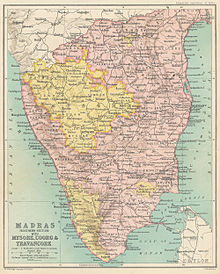


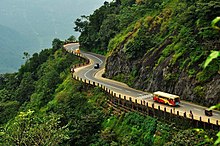

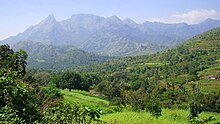




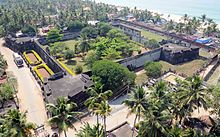
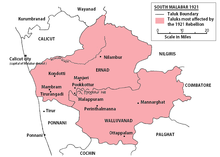








Malabar (disambiguation)DistrictMadras PresidencyKozhikodeTipu SultanBombay PresidencyNorth MalabarSouth MalabarTaluksGudalurPandalurNilgirisMadras StateKasaragodKeralaThrissurPalakkadKannurLakshadweepDutch MalabarZamorin of CalicutArakkal kingdomKingdom of MysoreKasaragod districtKannur districtWayanad districtKozhikode districtNilagiri districtMalappuram districtPalakkad districtThrissur districtErnakulam districtTangasseriAnchuthenguMalabar CoastWayanadMalappuramChittur talukChavakad TalukKodungallur TalukPonnani TalukFort KochiLakshadweep IslandsNilgiris districtTamil NaduTravancoreMalayalamlingua francaJeseriLaccadive IslandsTravancore-CochinStates Reorganisation Act, 1956South CanaraLaccadiveMinicoyThalasseryCherpulasseryOttapalamBritish ruleMalabar peppercoconutNilamburBeyporeArabian SeaMalabar ManualWilliam LoganSouth Canara DistrictWestern GhatsMysoreCoimbatoreprincely stateCochinBharathappuzhaCalicutPinarayiP. Krishna PillaiK. DamodaranE. M. S. NamboodiripadIndian Union Muslim LeagueTulu NaduKanyakumariMalabarsMalabarCosmas IndicopleustesDravidianAl-BiruniIbn KhordadbehAl-BaladhuriPersianArabicKundahEranadKingdom of ValluvanadParappanadKavalapparaKingdom of TanurNilambur KingdomNedungadiZamorinVasco da Gamadiscovery of a sea routeEuropean colonisationIndian subcontinentZamorin of KozhikodePonnaniTyndisAncient RomeKadalundiVallikkunnuRoman EmpireSangam periodPalakkad GapCoromandel coastPliny the ElderChera dynastyEzhimalaPeriplus of the Erythraean SeaLimyrikePtolemysestercesTriprangodeTirunavayaKottakkalChaliyarGoda RaviThavanur



